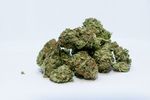Marijuana Policy 2020 Candidate's Guide to - Smart Approaches to Marijuana
←
→
Page content transcription
If your browser does not render page correctly, please read the page content below
2020 Candidate's Guide to
Marijuana Policy
Marijuana use rates are bucking decades-long downward trends in overall drug use
among our nation’s youth. Illicit sales continue to be burdensome, even in states
that have “legalized” the substance. As a result of commercialization, vulnerable
communities are being targeted by predatory marketing tactics, and the vaping
trend is breaking records in high schools. Meanwhile, lobbyists want to pass
legislation to get billions of dollars of institutional investment into the industry.
Furthermore, it seems we have forgotten that legalization breaks with our
commitments to both federal and international law. The clouds may be getting
thicker, but it is never too late to take a Smart Approach to Marijuana.2
The Scienti c View
"Marijuana use is likely to Marijuana use is associated with signi cant
increase the risk of dependence and addiction problems, as are
developing schizophrenia, alcohol and smoking. Four million Americans
other psychoses, and suffer from Cannabis Use Disorder (NIH/NIDA).
social anxiety disorders."
- National Academies of
Marijuana use is destructive to mental health.
Sciences, Engineering,
Daily use of high-potency marijuana results in
and Medicine
ve-times increased odds of developing a
psychotic disorder like schizophrenia (Lancet
Psychiatry), and is also associated with major
depression and suicidal behavior in young
people (JAMA Psychiatry).
The prevalence of Marijuana Use Disorder
in children 12-17 increased 25% after
25% recreational marijuana legalization.
JAMA Psychiatry: Association Between Recreational Marijuana Legalization in the United
States and Changes in Marijuana Use and Cannabis Use Disorder From 2008 to 2016
More peer-reviewed research here: https://learnaboutsam.org/research-studies-on-marijuana3
Rescheduling
Although more Under the current framework, rescheduling
medical research marijuana would serve as little apart from a
should be encouraged,
symbolic victory for industry lobbyists.
rescheduling
Rescheduling under the current rules would do
marijuana may be a
little to help those with the most pressing medical
misguided place to
begin. It will not needs (Wayne Law Review).
necessarily have a
substantial effect The Schedule I designation does not stop
under the current marijuana research. $14 million in research on
rules, due to the marijuana-derived medicine alone is currently
complex interactions going forward. However, agency-speci c changes
of regulatory agencies. could be considered to promote medical research.
Rescheduled, smoked marijuana would still not
meet rigorous FDA approval standards: it would
not be prescribed as medicine.
Current legislation, such as the Medical
Marijuana Research Act (H.R. 3797), aims to x
many of the licensing, access, and other issues
researchers face in their attempt to better
understand the marijuana plant and its
derivatives without the need for rescheduling
the substance.
Marijuana meets the technical de nition of Schedule I because it has a high
potential for abuse and has no FDA-approved use. Rescheduling whole
marijuana - while symbolically important for special interest groups - would not
have much of a real-world consequence in terms of reducing criminal penalties.
Still, efforts to increase access to marijuana and its components for research to
help the FDA nd additional therapeutic uses for the drug are important.
- SAM President Dr. Kevin Sabet, in his book Reefer Sanity, published by Beaufort4
What About CBD?
While this may be a The Drug Enforcement Agency, National Institute
promising new eld of on Drug Abuse and Public Health Service should
medicine, the continue to make the authorization process more
marijuana derivative is straightforward for physician researchers working
being abused by
with CBD.
companies that do not
play by the rules.
With the support and oversight of the
aforementioned agencies, compassionate CBD
research programs should be established for the
seriously ill and CBD products should be
dispensed for study by board-certi ed
neurologists (SAM).
Few companies comply with FDA requirements for
proper manufacturing of CBD products, and this is
hazardous to consumers. Many products sold as
“supplements” are within the scope of the Food,
Drug, and Cosmetic Act and should be regulated.
CBD Marketplace Sampling: Label Inaccuracy
49% of
sampled CBD products
49%
contained THC
-F.D.A.
Contained within 20% of CBD Indicated 45.1%
Contained Less Than 80% of CBD Indicated 17.6%
Contained More Than 120% of CBD Indicated 37.3%
U.S. Food and Drug Administration:
2020 Sampling Study of the Current Cannabidiol Marketplace5
Marijuana and Banking
Industry lobbyists are The SAFE Banking Act (H.R. 1595 & S.1200) would
working to legitimize a set the stage for powerful investment rms to
predatory industry on take ownership of the marijuana industry, and
the national level under further normalize marijuana use. This would pit
the guise of granting
corporate interests against public health.
marijuana retailers
access to banking.
This bill would expand the federally illegal
marijuana marketplace, and create substantial
potential for money laundering (Drug Policy).
Under the guise of safety, this bill would bolster
an industry of addiction. It is already clear that
legalization has fueled the illicit market.
Parcels Containing Marijuana from Colorado, Mailed to Another State
Rocky Mountain High Intensity Drug Traf cking Area
1,200
1,000
800
600
1,000 Legalization
400
200
0
2009 2010 2011 2012 2013
L 2014 2015 2016 2017
There are parts of this state, and I represent them, that did not vote for
[legalization] but are bearing the brunt of the growth of the [illicit] market that
was generated from it…For all the other states going down this same green,
green-brick road: if you legalize marijuana...this is what you can expect to happen.
- Colorado District Attorney George Brauchler in May 2019, after the largest illicit
market marijuana bust in state history. 80,000 plants were seized6
Marijuana and Social Justice
While marijuana legalization is heralded as a way
There is a third way,
which removes to address the disproportionate imprisonment of
penalties for marijuana people of color, zero (0) states have seen a
possession but avoids signi cant reduction in their prison populations
the ills of since legalization (SAM).
commercialization.
Legalization is not real People of color are about six times more likely to
social justice, but the be arrested for drug use than white people.
beginning of a Marijuana decriminalization and records
nightmare for minority expungement are necessary social justice reforms,
communities and low- but full legalization will enable a multi-billion-
income neighborhoods. dollar addiction industry to target vulnerable
communities.
Some of Denver’s low-income neighborhoods have
one marijuana business license for every 47
residents. Disadvantaged communities, already
affected by liquor stores on every corner, could
face the added strain of weed shops on every
block due to legalization (Denver Post). The
problems are compounded considering the
industry nationally is less than 2% minority-owned.
U.S. Marijuana Industry Owners & Founders by Race
White 80.9%
Other 6.7%
Hispanic-Latino 5.7%
African-American 4.3%
Asian 2.4%
Marijuana Business Daily7 Lessons from Legal States Legalization has increased marijuana use among young people and illicit market drug sales across state borders. The trend of marijuana vaping threatens the health of countless teenagers and heightens the need for greater oversight on the national level. Youth Use The rate of 18-to-25- year-old past month marijuana use in non-legal states is 20.8%. In legal states the rate is as much 29.2% (NSDUH, 2017). According to the Healthy Kids Colorado Survey, since 2017, past month marijuana use among those aged 15 or younger has increased 14.8%. Overall, marijuana use amongst all age groups has risen 6.2%. In the year immediately following legalization in Colorado, marijuana exposure calls to poison control centers doubled. Unintentional exposure to children 0-8 years old quadrupled (Colorado DPHE, 2019). Oregon and Washington State experienced similar increases (Oregon Poison Center, 2018, and Washington State OFM, 2017). Monitoring the Future (MTF) ranks teen nicotine and THC vaping from 2017-2019 as its largest single-year increases in drug usage in its 45-year history. This is an urgent issue that affects every state, regardless of legalization (MTF). Illicit Interstate Commerce The decisions of individual states have immense impacts across the country, which is why this should not be a states’ rights issue. For example, up to ve times the amount of marijuana sold in Oregon leaves the state for black market sales. Law enforcement across 16 states have reported seizing marijuana coming from Oregon (Flaccus, 2018).
8
International Commitments
The United States is a leading signatory to treaties that protect the people of the
world from the perils of addiction and the illicit drug trade. Each step towards
marijuana legalization is a step away from this leadership and the stability created
by international trust.
U.N. Convention Against Illicit Traf c in Narcotic Drugs and Psychotropic Substances, 1988
Image by L.tak
Parties to the convention Territories of Parties where the treaty is not applied Non-parties
The United States is a signatory to the Single Convention on Narcotic Drugs, 1961,
which was rati ed by 186 countries and introduced a new policy of curtailing
opium and marijuana abuse (UNODC).
The United States is a signatory to the Convention on Psychotropic Substances,
1971, which was rati ed by 184 countries and sought to further develop an
international drug control system. This treaty also introduced treatment and
rehabilitation provisions for drug users (UNTC).
The United States is a signatory to the United Nations Convention Against Illicit
Traf c in Narcotic Drugs and Psychotropic Substances, 1988, which was rati ed
by 191 countries and sought to curtail a growing, multi-billion-dollar illicit drug
trade. The treaty also addressed the threat to young people posed by growing
demand for marijuana, cocaine, and heroin (UNTC).9
International Commitments (Contd.)
The United States has long been an “advocate and defender” of the
aforementioned treaties, but with marijuana legalization occurring at the state
level – while still illegal federally and under UN treaties – we are on hazardous
legal ground. We may not be able to call upon other signatory countries to play
their part in these, and other, treaties if we do not show an equal commitment
to upholding international law. This may have rami cations that affect global
trust beyond the enforcement of drug law (Brookings).
Some states that have legalized marijuana are continuing to push for the
legalization of other drugs. Oregon citizens will vote on the legalization of
hallucinogenic mushrooms this year, as well as on the decriminalization of all
drugs (Huf ngton Post). If these initiatives pass, they will push the United
States further out of compliance with international law.
INCB remains concerned at the legislative developments permitting the
use of cannabis for 'recreational' uses. Not only are these developments in
contravention of the drug control conventions and the commitments
made by States parties, the consequences for health and well-being, in
particular of young people, are of serious concern.
- International Narcotics Control Board Annual Report, 201910
THC Vaping in Teens, 2017-2019
Past Month Use
15%
National Institutes of Health; U.S. Department of Health and Human Services.
14%
13%
The 2018-2019 increase
12%
amongst 12th Graders is the
second largest one-year
11%
jump ever tracked for any
substance in the 45-year
10%
history of the Monitoring
Source: National Institute on Drug Abuse;
10%
the Future Survey (nicotine 9%
vaping was the largest,
from 2017-2018). 8%
7%
6%
5%
4%
2017 2018
L 2019
12th Graders 10th Graders
As the number of adolescents who vape marijuana increases, so
too does the scope and effect of any associated health
consequences, which may include lung injury...the rapid rise of
marijuana vaping indicates the need for new prevention and
intervention efforts aimed speci cally at adolescents.
- Dr. Jody W. Zylke, Monitoring the Future, 2019You can also read






















































